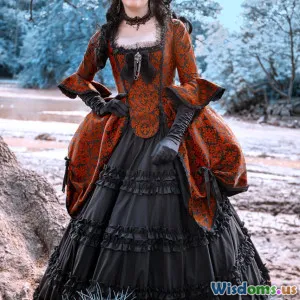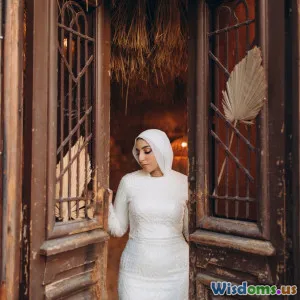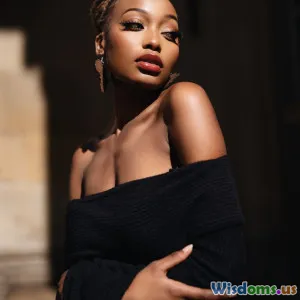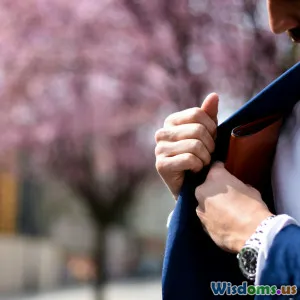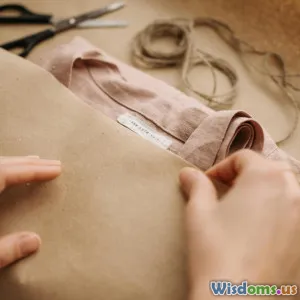
A Deep Dive into Parisian Fashion During the Belle Epoque
15 min read Explore the iconic styles, innovative designers, and cultural influences that defined Parisian fashion during the Belle Epoque era. (0 Reviews)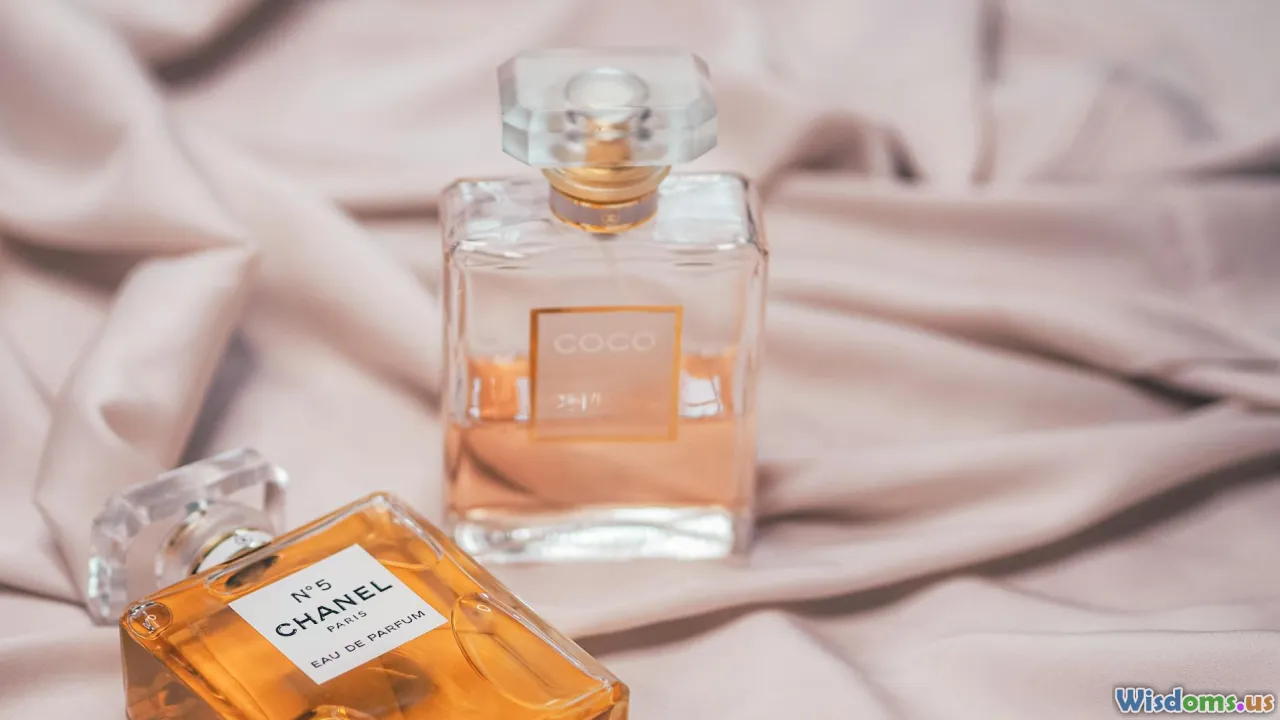
A Deep Dive into Parisian Fashion During the Belle Époque
The late 19th and early 20th centuries were a time of unrivaled creativity and optimism in France, immortalized as the Belle Époque. While artists and inventors captivated the world, it was the style of Parisian society that truly defined the era. The maxim “La vie est belle”—life is beautiful—extended to every ribbon, bustle, and silk gown that graced the boulevards. Today, we unravel the intricacies of Parisian fashion during this golden age and discover how it still influences modern aesthetics.
Glamour on the Boulevard: Paris Sets the World’s Style Agenda
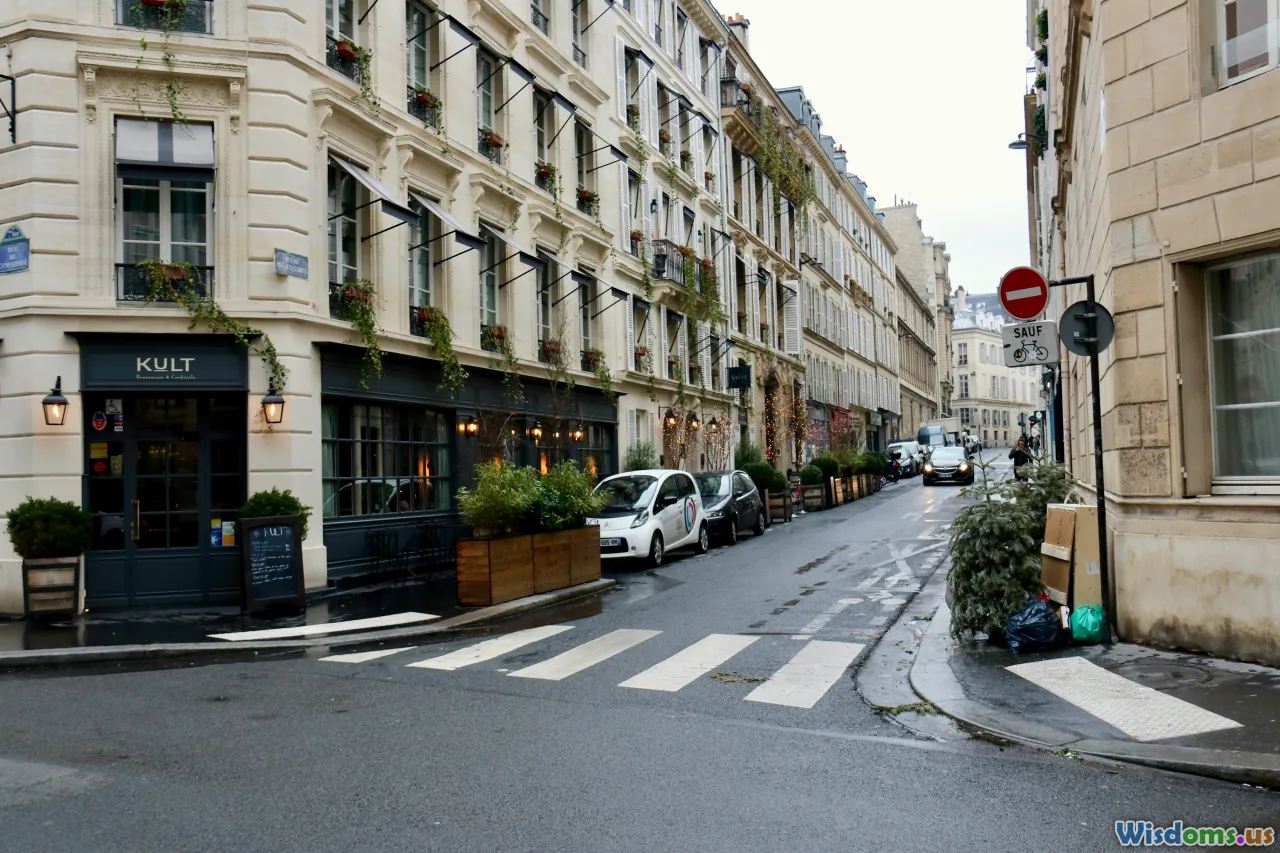
As electric lights illuminated Parisian streets, the city surged forward as the epicenter of luxury and flair. The rise of massive department stores like Le Bon Marché and dazzling expositions, including the iconic World's Fair of 1900, meant that Paris was not just a city—it was a showcase for global fashion.
Parisians became arbiters of lifelong taste, demonstrating subtle social cues through their sartorial choices. Elites promenaded along the Champs-Élysées, flaunting wide-brimmed hats, meticulously tailored jackets, and the coveted S-shaped silhouette. The spectacle wasn't merely for vanity: it symbolized sophistication, prosperity, and a keen awareness of artistic revolutions echoing across the city.
Take for instance the celebrated actress Sarah Bernhardt, who embodied Belle Époque glamour. Her distinctively dramatic gowns not only captivated high society but routinely influenced new dressmaking trends. Bernhardt’s Laurentian velvet capes, piped with fox fur and astrakhan, signaled chic to both Parisiennes and distant admirers in New York or St. Petersburg.
Fabrics, Forms, and the Flourish of Ornamentation
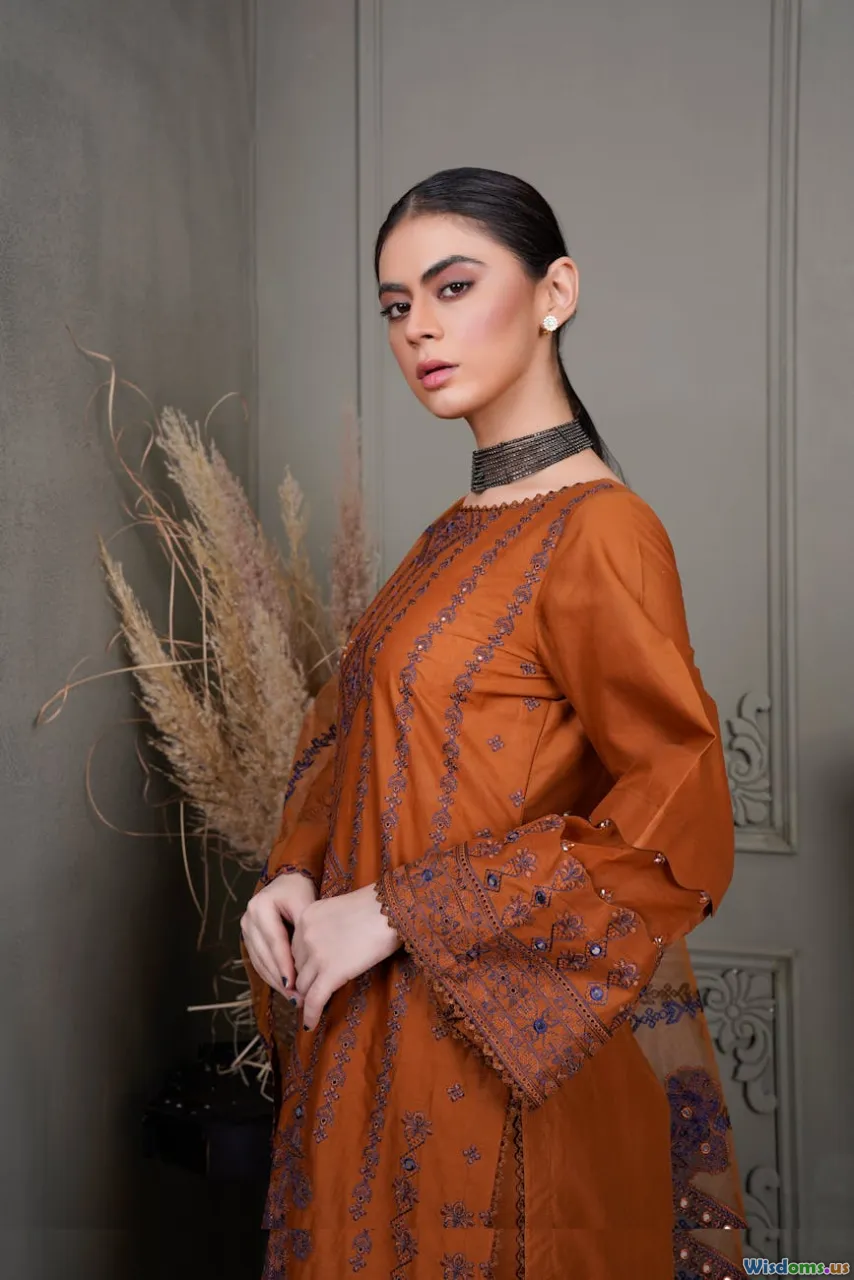
Victorian constraint faded as new fabrics and embellishments took center stage. Silk taffeta, velvet, and gauzy chiffon were all the rage, with many garments hand-embroidered or adorned with beadwork. The era’s fascination with Japanisme brought in lavish kimono-inspired robes, while Art Nouveau's curving lines translated into undulating trims and whip-stitched scrolls on bodices.
Consider the innovation in corsetry: Maison Cadolle’s introduction of the modern bra in 1889 liberated women’s posture, even as the “wasp waist” silhouette persisted. Fashion designers worked closely with skilled ateliers and milliners to cloak their clients in tiered lace, feathered boas, and dazzling jewels, epitomizing Belle Époque opulence.
An outstanding example is the ornate ballgowns worn at the Opéra Garnier. Designed with swirling glass beads and sweeping trains, these statement dresses presented a moving tapestry of light. Textural interplay—between matte and sheen, stiffness and flow—gave every evening ensemble a sense of poetic drama.
Haute Couture: Birth of the Fashion House
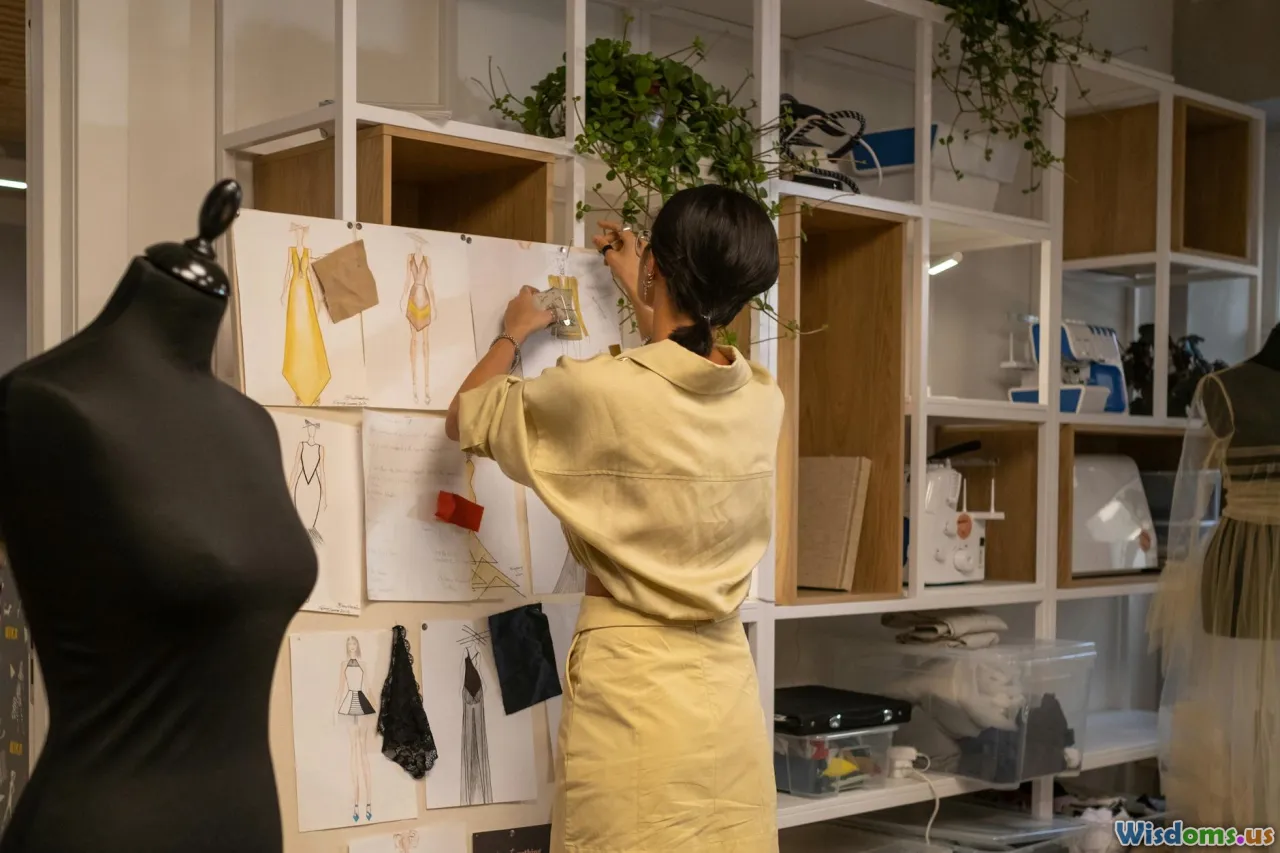
Perhaps the era’s greatest innovation was the birth of haute couture. In 1858, Englishman Charles Frederick Worth opened a Parisian atelier that revolutionized the relationship between designer and client. Instead of tailors laboring in the background, creators became celebrities: Worth’s gowns, tagged with his own label, matched royalty with discernible signatures.
Pioneers like Jeanne Paquin and Jacques Doucet soon followed, each establishing houses where exclusive, made-to-measure garments catered to every wealthy woman’s personal fantasy. By 1910, Paul Poiret upended the rules again, abolishing corsets in favor of columnar gowns and introducing harem pants inspired by Orientalism. His bold, fragrant shows—ahead of their time—turned fashion into an all-sensory spectacle.
Haute couture’s meticulous standards set fashion’s global pace. Orders flooded in from American heiresses and Russian princesses alike. The demand for bespoke Parisian design forced the industry into a system that still underpins luxury branding and catwalk seasons today.
Menswear: Elegance and Modernity
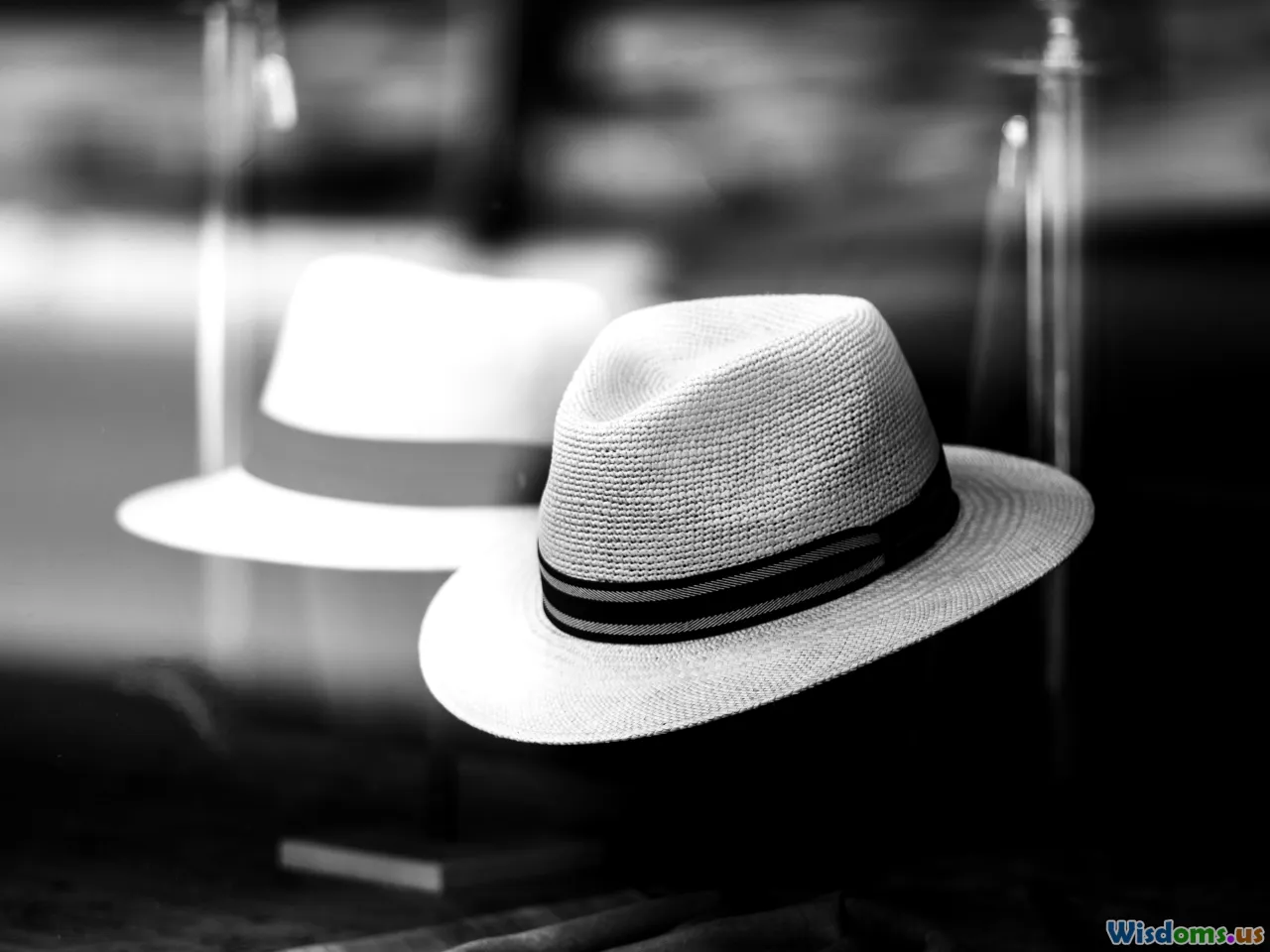
While Belle Époque women’s fashion dazzled, men’s sartorial story was every bit as transformative. The late 19th-century dandy gave way to the sharply dressed, urbane Parisian gentleman—never seen without a starch-collared shirt, tailored frock coat, cane, and top hat.
The three-piece suit became a symbol of progress. Innovations in weaving and dyes produced rich hues of navy, charcoal, and umber, moving away from the monochrome of prior generations. The bowler and boater replaced older headwear, affording greater comfort on modern transit systems. Lapels widened for flair, and the double-breasted look gained favor among financiers and politicians.
By 1900, the tennis sweater, trench coat, and even the tuxedo started making appearances at the city’s grand hotels and tea rooms. Pierre Cardin, who started as an apprentice in this tradition, later cited Belle Époque gentlemen as a major inspiration for his futuristic suiting.
Accessories, Millinery, and the Power of Detail

No ensemble was complete without a flourish of accessories. Parisian milliners such as Caroline Reboux sculpted dramatically feathered hats nicknamed “Birds of Paradise.” Ribbons, flowers, and silk veils nodded to Art Nouveau, while ostrich plumes and even taxidermied songbirds perched above brims for evening spectacle.
For women, gloves were non-negotiable, chosen to match fabric, circumstance, and time of day. Daywear demanded suede or fine kid leather, while nights called for opera-length silk or mesh. Tortoiseshell combs and mother-of-pearl fans added tactile delight to daily ritual.
Distinctive parasols offered both fashion and protection, their embroidered canopies unfurling in tandem with the era’s obsession with pale complexions. At balls, lorgnette spectacles or bejeweled clutches brought additional personality to an already intricate look.
The Social Canvas: Fashion’s Political and Artistic Statements
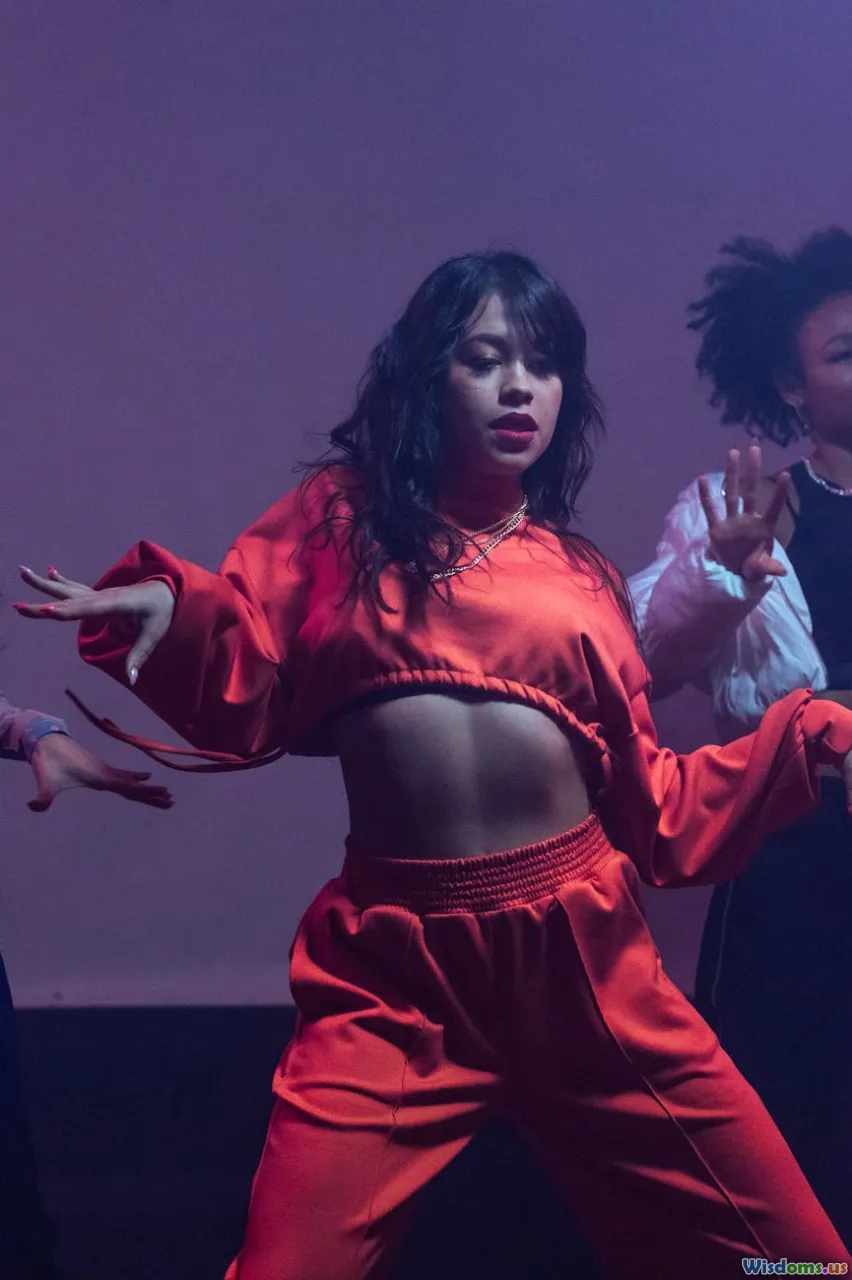
Parisian fashion wasn’t pure frivolity—it pulsed with social and political significance, distinguishing artists, courtesans, and the haute bourgeoisie. The demi-monde claimed sex appeal as a weapon: famed dancer La Belle Otero strutted in gowns with scandalously drooping necklines, while Colette made androgynous tailoring chic with crisp shirts and monocles.
Working women in shops and factories wore practical shirtwaists and simpler skirts, reflecting shifting distances between classes. The rise of bicycling and women’s suffrage translated into shorter hemlines and the appearance of functional bloomers. Libertine clubs like Le Chat Noir hosted literary rebels and avant-garde Bohemians, blending velvet smoking jackets with beaded flapper frippery years ahead of their time.
Salon society—think Marcel Proust’s Guermantes—gathered to both watch and be watched, employing costume to abet intrigue, romance, and artistic posturing. Here, subtle flourishes (a sapphire pin, a Mandarin hatband, or embroidered slippers) might signal adherence to, or rebellion against, unwritten codes.
Fashion's Relationship with Art: A Symbiotic Evolution
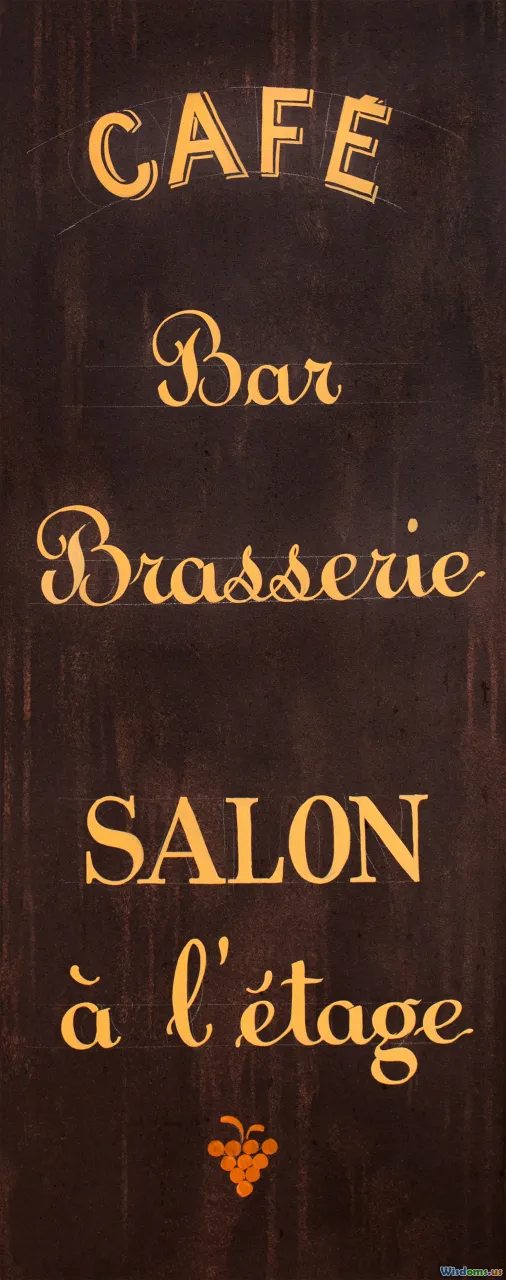
The Belle Époque is synonymous with aesthetic synergy: art and fashion grew entwined, cross-pollinating across studios and workshops. Georges Barbier’s illustrations graced society magazines, blurring the line between advertisement and fine art. Leading designers commissioned motifs directly from Art Nouveau craftsmen, their sinuous floral arabesques migrating from doorframes to velvet bodices.
Artists like Henri de Toulouse-Lautrec and Jules Chéret immortalized the drama of Moulin Rouge costumes in their psychedelic posters. Paul Poiret collaborated with Raoul Dufy to create lush textile prints, while couture clients themselves collected Japoniste ceramics and Impressionist painting, spinning private symbolism into their wardrobes.
This dialogue wasn’t unidirectional: works by Manet or Boldini often doubled as documents of sartorial change. The interplay contributed to the era’s sense of ‘total design’—a unified quest for beauty in life and daily rituals.
Global Influence: How Paris Fashion Conquered the World
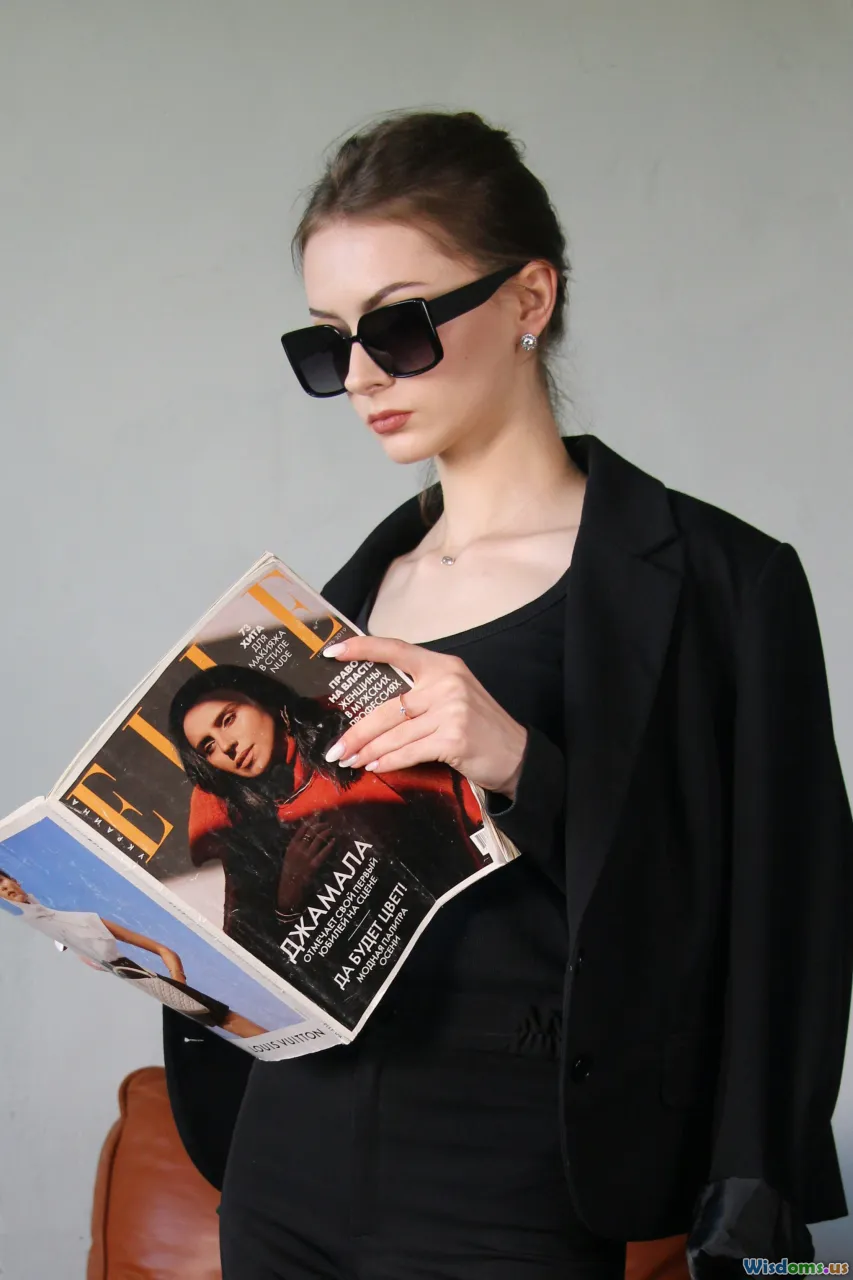
Even before radio or film, Parisian trends traversed oceans. Fashion journals like La Mode Illustrée and imported plates made city chic accessible from Buenos Aires to Bombay. Wealthy travelers scheduled tours of French maisons alongside Louvre visits, stocking their wardrobes and returning as local trendsetters.
The Parisian model—runways, maison branding, and stylistic seasonal updates—became the blueprint for haute couture empires in New York and London. Worth, Poiret, Vionnet, and Doucet all exported patterns, sketches, and dressed emissaries for cosmopolitan capitals. English and American society columns translated the latest Parisian idioms for their own audiences, while famed Department stores such as Harrods wrote fashion ‘scripts’ that veiled direct translations of Parisian originals.
By the end of the Belle Époque, enterprising American retailers could purchase a legal 'copy' at exorbitant prices, instantly inscribing their society with the café-society glamour of the Grands Boulevards. France’s creative infrastructure—from guild-trained embroiderers to lucent fabric dyers—remained unrivaled.
Tips for Modern Elegance: Bringing Belle Époque Inspiration into Today’s Wardrobe
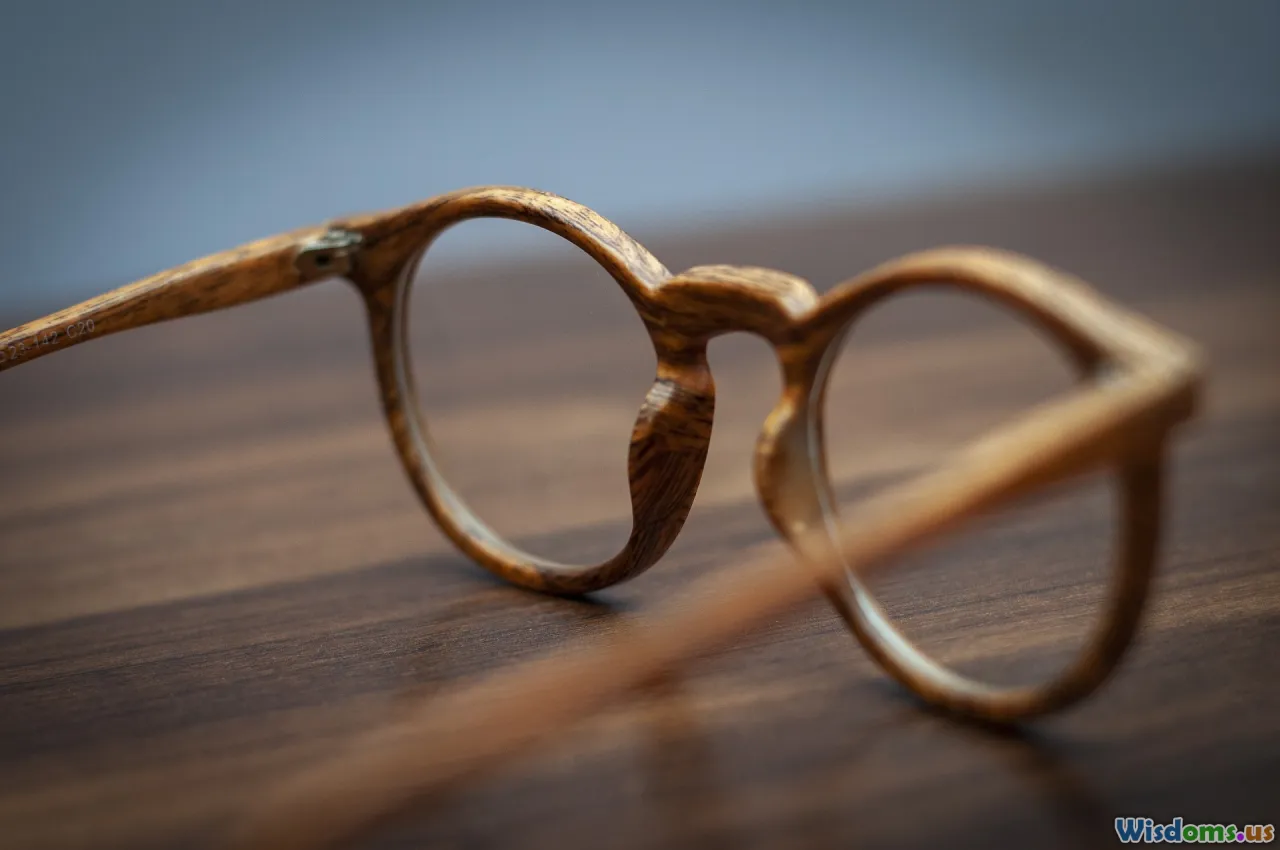
The allure of Belle Époque style endures. Even in a minimalistic age, you can borrow from Parisian flair:
- Focus on Details: Add lace trim to collars or cuffs, layer pearls, or pin a jeweled brooch on a neutral jacket for classic opulence.
- Play with Silhouette: Try a structured blouse with a flowing skirt, or an architectural, cinched-waist midi dress.
- Accessories Matter: Tie a silk scarf into your hair, choose feathered or wide-brim hats for special occasions, or layer long gloves for a sense of occasion.
- Color and Texture: Seek out rich velvets, subtle jacquards, and romantic prints to echo the era’s love of sumptuous materials.
- Mix Period with Contemporary: Pair a vintage-inspired blouse with tailored jeans or boots for a chic, evocative blend.
Whether you’re drawn to the painterly touches of Art Nouveau or the ornate glamour of a Worth ballgown, elements of Belle Époque fashion will imbue your look with timeless sophistication.
Paris during the Belle Époque was more than a stage for beautiful clothing—it was the world’s living laboratory for aesthetic innovation and social change. The city’s mix of exuberance, craftsmanship, and daring keeps captivating designers and dreamers today, ensuring that Belle Époque elegance remains not just history, but an inexhaustible source of inspiration for generations to come.
Rate the Post
User Reviews
Popular Posts










